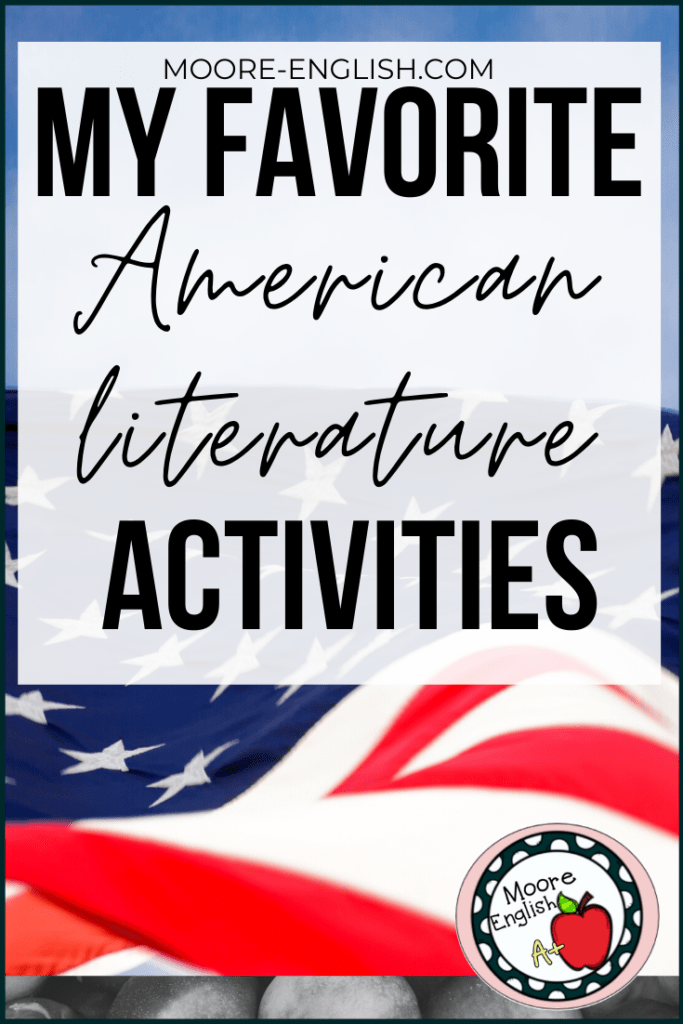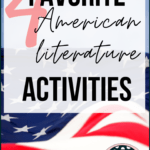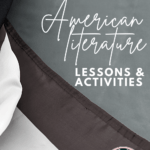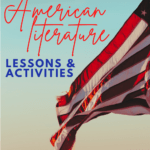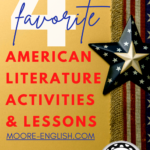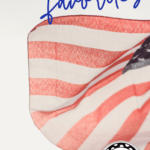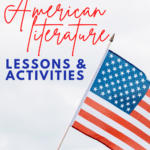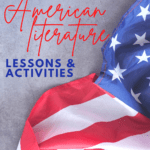With Independence Day just around the corner, I thought I’d share some of my favorite activities from my American literature course. This is a junior-level course. But many of the texts and activities can be adapted for other grades and students.
This post this post may contain affiliate links. Please read the Terms of Use.
American Literature and Technology
Gothic Word Cloud: During our unit on Romanticism, students read texts from a variety of perspective. They read traditional Romantic writers like William Cullen Bryant, New Poetic figures like Walt Whitman, Transcendentalists like Ralph Waldo Emerson, and Gothic writers like Edgar Allan Poe. When we get to Gothic writing, I ask students to read and annotate Poe’s “Berenice.” As they read, I ask students to generate a list of words they think describe Gothic literature.
Then, the next day in class I post a Poll Everywhere link that asks students to use their reading experience to describe the characteristics of Gothic writing. This works best if students respond in words and phrases but not in complete sentences. As students respond, their words begin to create a Word Cloud. I’m including a screenshot of my students’ most-recent wordle. The Word Cloud create a visual representation of Gothic literature. From the Word Cloud, students work in partners or small groups to develop a definition of Gothic writing. This is a great way to help students visualize texts and to quickly assess who did the reading.

American Literature and Rhetoric
Student Sermons: During our American Enlightenment unit, students read foundational documents and seminal texts, many of which aim to convince or persuade readers and listeners. In the case of Jonathan Edwards’ “Sinners in the Hands of an Angry God,” the speaker is persuading listeners to be saved. On the other hand, revolutionary figures like Thomas Paine and Patrick Henry persuade readers and listeners to join the revolutionary cause. Reading so many texts focused on persuasion provides students with an opportunity to analyze a speaker or writer’s rhetorical moves.
However, I also want to provide students with an opportunity to apply their rhetorical knowledge. Ultimately, students will apply their rhetorical skills to a summative persuasive research paper. But before such a large summative experience, I also want students to have a lower-stakes opportunity to practice rhetoric.
That’s where Student Sermons come in! Students choose a topic: some choose serious subjects like climate change. But others choose light-hearted topics like senior skip day. Then, students write their own “sermon,” carefully considering their rhetorical moves. Then, students “preach” their sermon to their classmates. They consider how eye contact, body language, and speech also contribute to persuasive speaking. Students usually love Sermon Day and really get into the experience.
American Literature and Meter
Introducing Meter: The focus of American literature is the connection between a text and the historical and cultural contexts in which it was created. The evolution of American poetry is a great way to show students how literature reflects its context. To help students understand this evolution, we begin with Edward Taylor’s “Ebb and Flow,” which is very Puritan. Then we move into William Cullen Bryant’s “To a Waterfowl” to see some traditional Romantic poetry. Then we move into New Poetic Romantics, including Emily Dickinson.
I introduce my students to Emily Dickinson with this episode of Crash Course Literature. John Green introduces some biographical details about Dickinson. And he reads “I Heard a Fly Buzz When I Died–.” As students watch and listen to the episode, they complete this listening guide, which walks them through the poem. In the episode, Green introduces the concept of poetic meter. For my students, this may be the first time they’ve ever heard of poetic meter.
And that’s okay, so I explain that poetic meter relates to the number of syllables in a line of poetry. Using “I Heard a Fly…,” I model for students how to count the syllables in a line of poetry. I do the first stanza. Students and I do the second stanza. Students work with a partner to do the third stanza. And students work independently to do the fourth stanza. This gradual release helps students develop confidence. At this point, students are simply counting syllables and writing them down at the end of the line. Once students have scanned each line of the poem, we discuss what the meter reveals about the poem. In particular, the meter helps students determine the poem’s turn. Read more about the importance of teaching meter here.
Extending Meter
At this point, students are a little skeptical. For them, it seems wild that someone would take the time to count the number of syllables in their poetry. So we do it again with another Dickinson poem. Then we go back to “To a Waterfowl” and try it there. Once we cross from Dickinson to the buttoned-down Cullen Bryant, students usually start to believe me that there might be something to this meter thing.
As the semester progresses, students encounter more American poetry from Realists, Moderns, and Post-moderns. With an understanding of meter, they are able to see how poetry has continued to evolve. When they read “Annabelle Lee,” they are able to see how meter elevates Poe’s Gothic aesthetic. And when they read Realist poetry, they are able to see how abandoning meter represents abandoning the past. When they read a Modern work like Edwin Arlington Robinson’s “Richard Corey,” they are able to see how using a meter creates irony. And when they read contemporary writers like David Tomas Martinez, they can see how far American literature has come.
Ultimately, learning about poetic meter is a way for students to see how literature reflects historical context. My students don’t necessarily need to know that his activity is called scansion. They don’t really need to know academic terms like “spondee.” And it’s okay to avoid fancy jargon. But students do benefit from being able to analyze how poetry has developed, evolved, and grown.
Epilogue: Happy 4th!
These are just a few of my favorite activities from my American literature course. Some honorable mentions include this American Dream timeline and this introduction to The Crucible. If you’re interested in more of our learning, let me know what other activities or lesson ideas you’re interested in. I hope you and your family have a fun and safe 4th!


